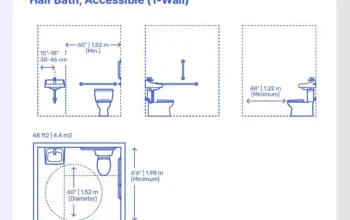There are many different types of plumbing fixtures available, including sinks, showers, toilets, and faucets. Many of these fixtures are available at home improvement stores, and you can also consult with professional designers or contractors for recommendations based on your particular needs. When choosing your fixtures, make sure to consider their performance and the type of water they use. Some types of fixtures are more durable than others, while others are more susceptible to rust and corrosion.
Plumbing fixtures come in different shapes, sizes, and styles. Typically, these pieces are permanently installed in a home, and they are connected to the plumbing system to deliver and drain water. Many fixtures are designed to function with a certain temperature range, as well as a specific flow rate. Some plumbing fixtures are made of porcelain or iron, while others are made of plastic or glass.
The most common type of plumbing fixture is the toilet, which uses a flush system to move waste. Since toilets are used constantly, they are subject to wear and tear. Regular inspection of the base of the toilet can prevent major problems down the line. Drains are another common type of plumbing fixture, and most include a trap or strainer to keep drains clean. This prevents potentially harmful gases from entering the home.
Most states have adopted minimum standards for plumbing fixtures. These laws apply to the sale and installation of new fixtures. Some states have adopted these standards as mandatory, while others have made them optional. The Uniform Plumbing Code, was adopted as law in 1928 and has remained in effect for over eight decades. The code’s latest edition incorporated alternate water sources for non-potable applications and rainwater catchment systems.
Plumbing fixtures are important for a home’s comfort and safety. The type and quality of plumbing fixtures can help a home’s occupants feel more comfortable and safe. Whether it’s a home, an apartment complex, or a commercial building, plumbing fixtures are essential for proper health. So, when selecting a plumbing fixture, make sure to do your research and understand its role and purpose.
One type of sink is a pedestal sink. This type of sink is wall-hung with a decorative vertical leg that supports the sink bowl. A set of brackets anchors the sink bowl to the wood framing. These sinks are generally smaller than a kitchen sink, and they hide the drain piping.
States are also beginning to take steps to promote water efficiency in plumbing fixtures. Some states have passed laws requiring manufacturers to label their products with WaterSense and other environmental certifications. Others are developing policies that make it more affordable for homeowners to invest in high-efficiency fixtures. One such initiative is Colorado, where homeowners can receive tax credits if they install water-efficient fixtures.
Ventilation is important for all plumbing fixtures that discharge wastewater. Without adequate ventilation, a vacuum can form in the drain line, causing water to be sucked back up into the line. Vents allow air to flow into the drain line and break up water and waste. Without proper ventilation, it would be impossible to use fixtures properly.




